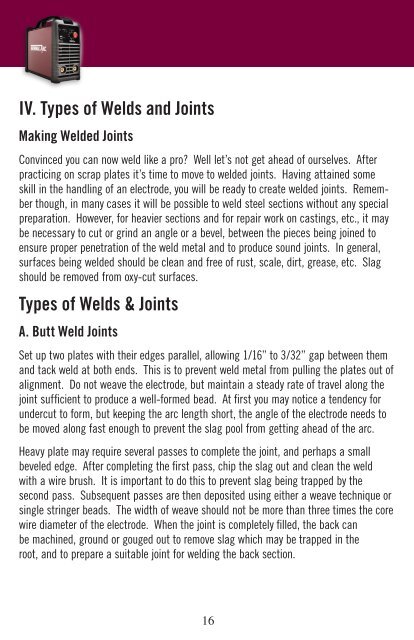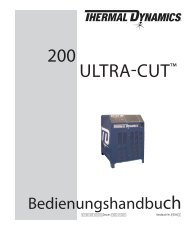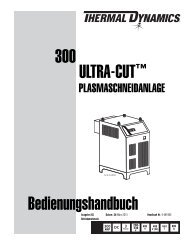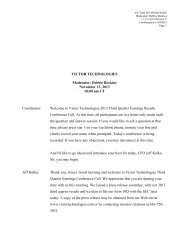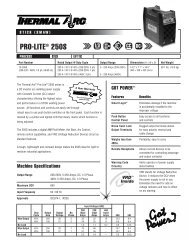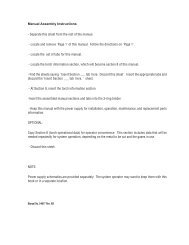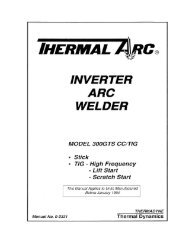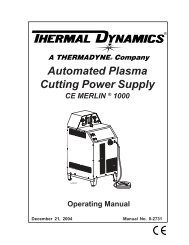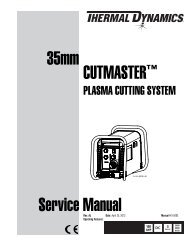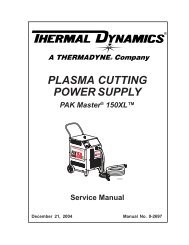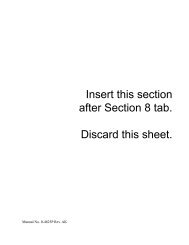Thermal Arc 95 S Brochure Click here to receive your free copy.
Thermal Arc 95 S Brochure Click here to receive your free copy.
Thermal Arc 95 S Brochure Click here to receive your free copy.
You also want an ePaper? Increase the reach of your titles
YUMPU automatically turns print PDFs into web optimized ePapers that Google loves.
IV. Types of Welds and Joints<br />
Making Welded Joints<br />
Convinced you can now weld like a pro? Well let’s not get ahead of ourselves. After<br />
practicing on scrap plates it’s time <strong>to</strong> move <strong>to</strong> welded joints. Having attained some<br />
skill in the handling of an electrode, you will be ready <strong>to</strong> create welded joints. Remember<br />
though, in many cases it will be possible <strong>to</strong> weld steel sections without any special<br />
preparation. However, for heavier sections and for repair work on castings, etc., it may<br />
be necessary <strong>to</strong> cut or grind an angle or a bevel, between the pieces being joined <strong>to</strong><br />
ensure proper penetration of the weld metal and <strong>to</strong> produce sound joints. In general,<br />
surfaces being welded should be clean and <strong>free</strong> of rust, scale, dirt, grease, etc. Slag<br />
should be removed from oxy-cut surfaces.<br />
Types of Welds & Joints<br />
A. Butt Weld Joints<br />
Set up two plates with their edges parallel, allowing 1/16” <strong>to</strong> 3/32” gap between them<br />
and tack weld at both ends. This is <strong>to</strong> prevent weld metal from pulling the plates out of<br />
alignment. Do not weave the electrode, but maintain a steady rate of travel along the<br />
joint sufficient <strong>to</strong> produce a well-formed bead. At first you may notice a tendency for<br />
undercut <strong>to</strong> form, but keeping the arc length short, the angle of the electrode needs <strong>to</strong><br />
be moved along fast enough <strong>to</strong> prevent the slag pool from getting ahead of the arc.<br />
Heavy plate may require several passes <strong>to</strong> complete the joint, and perhaps a small<br />
beveled edge. After completing the first pass, chip the slag out and clean the weld<br />
with a wire brush. It is important <strong>to</strong> do this <strong>to</strong> prevent slag being trapped by the<br />
second pass. Subsequent passes are then deposited using either a weave technique or<br />
single stringer beads. The width of weave should not be more than three times the core<br />
wire diameter of the electrode. When the joint is completely filled, the back can<br />
be machined, ground or gouged out <strong>to</strong> remove slag which may be trapped in the<br />
root, and <strong>to</strong> prepare a suitable joint for welding the back section.<br />
16


